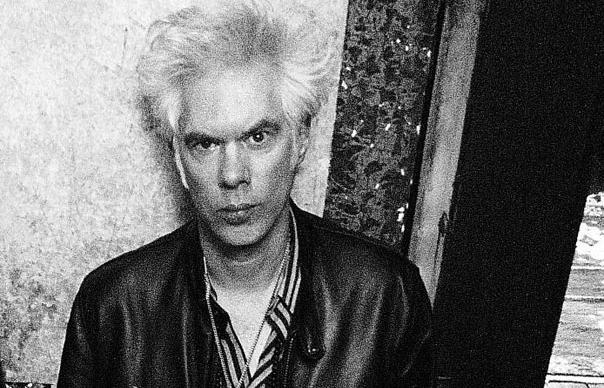You worked with Jack White on a number of occasions. How did you guys first meet?
Sheena Bruen, Oxford
I got to go back to say hello after a fairly early White Stripes show in New York. Then when they came back to town again I got to see them again, then we went out to dinner at one point, so each time they were around I got to see them. A cumulation of encounters. I remember playing the MTV Awards with the Raconteurs. Oddly enough, Jack was allowed to pick three guests because he was in charge of the background band for the evening. He asked Lou Reed, he asked Billy Gibbons and he asked me. I got to hang out backstage the whole night with Billy Gibbons talking about everything you can imagine. The history of Dadaism, the history of pinstriping on custom cars, the guy is amazing. It was really a treat. I didn’t get to hang out with Lou that night. Came and went like a ghost. Ah… I was honoured to go the memorial on Monday night at the Apollo Theater which was moving, to say goodbye to Lou.
When was the last meeting of The Sons Of Lee Marvin? And have there been any new members recently?
Alison Moore, Glasgow
You know, I can’t answer these questions. I’m not permitted. It’s part of the club’s rules. All I can say is the organisation is in full existence. If I tell you anymore, you don’t want to suffer the consequences. You could have members appearing at your home, and that’s probably not what you want. Where did the idea come from? Years ago, I had an idea, a silly idea for a film where John Lurie and Tom Waits and, I think, another character were three brothers who did not get along at all – this was the story – and their father was a recluse, semi-alcoholic, but very intelligent, interesting, gruff guy living out in nowhere, basically with a bottle and shotgun. He summons them – I don’t remember why – so it was a story where the three sons came to see their very cranky, difficult father. I wanted the father to be Lee Marvin. Then we lost him. But the organization existed in spite of the fact the film never did, and incorporated more members that could physically possibly look like Lee Marvin’s son. Once, maybe 15 years ago, Tom was in a bar in Northern California somewhere and the bar tender said, “There’s a guy in that booth over there, he wants to talk to you.” Tom said, “I don’t know him, what would I want to talk to him for?” The guy said, “Just go talk to him.” So Tom went over and says to this guy, “I hear you want to talk to me, what is it?” And he said, “Yeah, I heard about this organization, the Sons of Lee Marvin. I wanted to know about it.” Tom said, “What’s it to you?” And he said, “Well, I’m Lee Marvin’s son.” I guess he appeased the son, because we haven’t got into trouble.
Where can we see your documentary about Joe Strummer making the soundtrack of the Sara Driver movie When Pigs Fly?
Paolo Falossi
It is available. There’s a box set of Sara Driver’s films, Driver X 4, available from a Canadian company, Films We Like, which is a company of the great documentary maker Ron Mann, who made Grass and he made lots of interesting films on the Twist, ukeleles and Know Your Mushrooms. It’s all footage that I shot while Joe was recording at Rockfield in Wales. They were working, working, working, and I was just sneaking around, you know, filming some things here and there. And they made a nice film of it.
What are your memories of the No Wave scene and playing in The Del-Byzanteens?
Rick C, New York
The whole scene was quite fascinating, with DNA and Arto Linday, Tim Wright and Ikue. Certainly Glenn Branca was doing things with his band Theoretical Girls – one of the greatest band names ever. It was very interesting because it was very brief when you think about it. It was an attempt by most of the bands – not necessarily The Del-Byzanteens particularly – but those groups were trying to avoid reference to blues-based rock music, and it gave birth to John Zorn, and a lot of different offshoots of music, the Lounge Lizards, so yeah, it was certainly not people trying to get rich. They weren’t trying to go mainstream, so that was quite inspiring. I remember all those people. It extended beyond the music and the clubs into the diners where we ate and hung out, so it was a very close-knit scene. It spilled into the Squat Theatre as well, which became a centre for a lot of No Wave events. It was a pretty interesting period, for sure.
Why the umlaut on SQÜRL?
Ben Chester, Berlin
It’s an American affectation of heaviness. We had a funny things happen where Carter Logan and Shane Stoneback, who are quite a bit younger than me who speaks some European languages said, “The umlaut over the u is really pronounced ‘Squeerl’.” So I went and told Shane and Carter, “My friend said it should really be pronounced ‘Squeerl’.” They said, “Oh, really? Tell your friend it’s an American affectation and would be pronounce it ‘Meeterhead’ and ‘Blue Eester Cult’ and ‘Meetley Creeue’?” So that’s my answer.
You have great hair. What’s your secret?
David, Swindon
It’s just genetics. Hair genetics. I had a funny thing when I was young and my hair was turning white, these drag queens on the subway were saying, “Man, how did you get your hair like that? Did you dye each hair white?” I said, “It’s genetics.” They said, “Gene who? Gene Etics? Where’s his shop at?” Never mind. I couldn’t explain.



